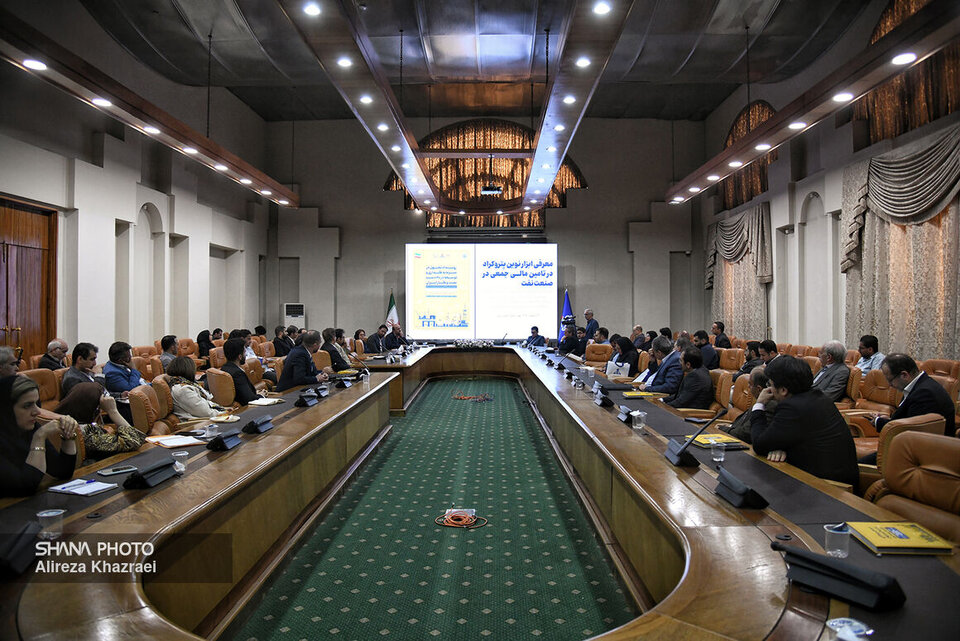They also outlined the required investments for developing these projects.
High hydrocarbon potential in key regions
Mohyeddin Jafari, NIOC’s exploration manager, emphasized at the conference—held Tuesday, on the sidelines of the National Investment Event in Iran’s Oil and Gas Industries—that Iran’s geological zones, particularly the Zagros region, the Persian Gulf, and the Sea of Oman, hold the country’s highest hydrocarbon potential. Investment in these areas could play a key role in securing Iran’s energy future.
Jafari noted that NIOC’s exploration division conducts onshore and offshore studies, including in the Persian Gulf and the Sea of Oman. A comprehensive map of Iran’s hydrocarbon potential indicates substantial oil and gas reserves across multiple regions.
Zagros: Iran’s prime oil, gas hub
Jafari detailed that the Zagros region—spanning Ilam, Kermanshah, Khuzestan, Fars, Bushehr, and Hormozgan provinces—holds the country’s largest oil and gas reserves. In contrast, central and eastern Iran, due to volcanic zones and the Sanandaj-Sirjan and Orumieh-Dokhtar geological formations, lack significant reserves. However, some central areas, such as Qom, Kashan, and Aran-Bidgol, show exploration promise.
Northeastern, northwestern potential
In the northeast, the Sarakhs and Toos fields are already operational, while geophysical and seismic surveys in Moghan (Ardabil) could unlock new exploration opportunities.
Active exploration blocks seeking investment
Jafari stated that 18 exploration blocks—primarily in Zagros, including Lorestan, North Dezful, South Dezful, and Fars, plus two offshore blocks in the Persian Gulf—require investment. Developing each block averages $40 million, though complex geological structures may necessitate additional geophysical studies and drilling, increasing costs.
Coastal, offshore opportunities
Proximity to existing refineries makes Hormozgan’s coastal and offshore blocks particularly attractive. Initial drilling in the Hormoz offshore block, covering Qeshm Island and its maritime sector, is estimated at $70 million.
Central Iran’s untapped reserves
Beyond southern Iran, central regions—especially Qom—hold significant potential, with an estimated 130 million barrels of oil reserves. Completed 2D and 3D seismic studies in the northeast and northwest (e.g., Kalat and Moghan) are expected to attract new investments.
Caspian Sea’s hydrocarbon potential
Mohammad-Hossein Daneshfar, CEO of Khazar Oil Company, highlighted the Caspian Sea’s vast hydrocarbon reserves, noting that neighboring countries are already exploiting their shares while Iran lags due to deepwater technology and high investment requirements. Exploration activities in each Caspian block require $100 million.
Daneshfar emphasized the need for international partnerships and a production-sharing contract model, similar to neighboring countries. Caspian oil has an API gravity of 38-40, differing from Persian Gulf crude.
Evolving exploration contract models
Alireza Taqipour, head of upstream contracts at NIOC, discussed Iran’s experience with integrated exploration, development, and production contracts. He noted that buyback contracts were introduced in 1985 during the Fourth Development Plan, with 58 exploration blocks later proposed.
Taqipour said integrated contract models could attract more investment, though exploration risks and international sanctions remain challenges.
Recent amendments under the Progress Plan allow integrated models in shared fields like the Caspian, with new risk-adjustment criteria for upstream contracts expected within two months.


Your Comment